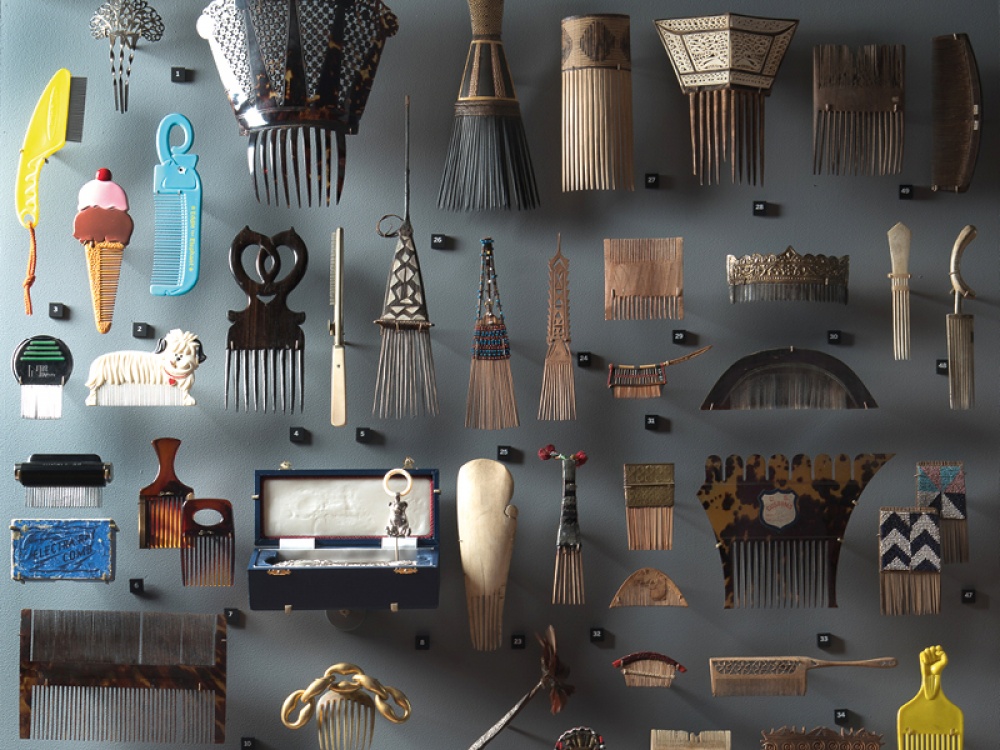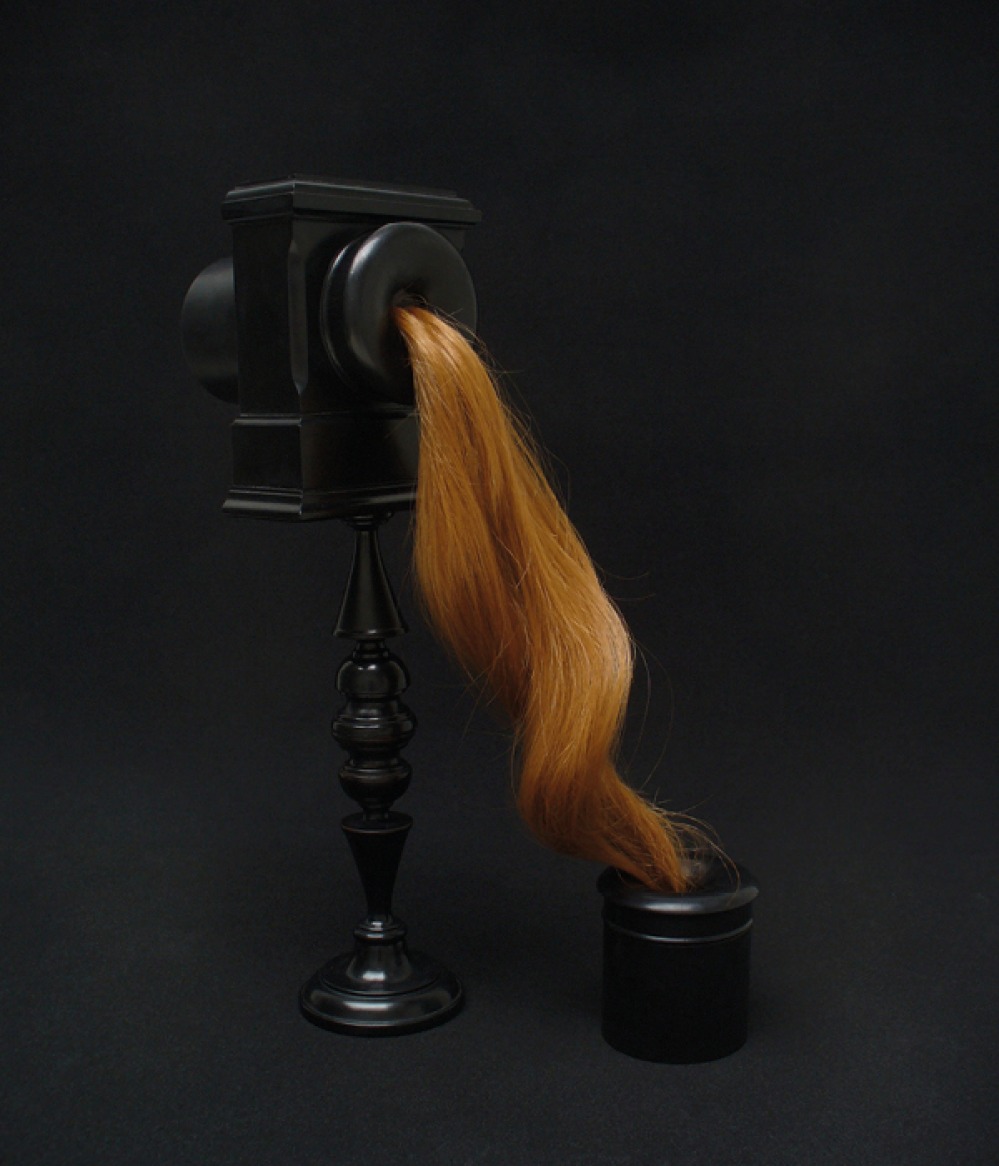Discover the Hair: Untold Stories Exhibition Weston Park Museum in Sheffield

A cutting edge exhibition at Weston Park Museum is untangling the possibilities of hair as both a renewable fibre and as a sense of identity. Lucy Cooper, exhibitions and displays curator at Sheffield Museums Trust, shares what to expect
‘We worked together to come up with a broad appeal exhibition that would mostly be based on collections from the Horniman Museum,’ Lucy explains. ‘They have some fantastic ethnographic collections. Hair was chosen to utilise the strength of these collections but also because it’s got a universal appeal. For each of our different audiences, there was something in there that we could develop and make locally relevant. A lot of people, when we say we’ve got an exhibition about hair, are slightly weirded out by it – but when they see the exhibition they realise how relevant it is to everyday life, and it’s an opportunity to learn about different cultures across the world. It’s been a great topic to explore.’
From jewellery and dresses to environmental protection, the exhibition highlights the qualities of hair as a material but also explores our complex relationship with it by weaving together the work of artists, film makers and designers with a range of objects and archive material. Highlights include artwork by Sheffield artist Kedisha Coakley, examining African-Caribbean natural hair and its place in women’s lives, a film created with Sheffield College Hair and Beauty students capturing the sensory experience of a haircut, and historic and contemporary hair jewellery made by Swedish women.

‘There are a couple of ‘wow’ objects,’ Lucy adds. ‘There’s a dress and shoes made with blonde hair which is a real sight to behold. There’s also a fantastic piece of art which is a giant wig which hangs from the ceiling in the centre of the exhibition. It’s slightly otherworldly but also plays on the idea that when a wig is on someone’s head you probably wouldn’t even notice it’s there if it’s a good one, but separated from a person it almost has an identity of its own. It’s quirky but also thought provoking.’
The exhibition overall is split into three key areas, or strands if you will. ‘The first one focuses on hair as a material and explores its potential for use in lots of different ways – everything from containing oil spills at sea to its versatility for use in jewellery and furniture,’ says Lucy. ‘The second section is all about hair care – the salon and barbershop experience and the social context of that and its significance for different people. The third section is entanglement which is all about the wider social questions around hair and its significance with identity for different cultures and genders, and also puts that in a historical context with things like Victorian memento moris and the tokenistic use of hair as a way to remember and celebrate people. There’s a lot in there and it’s hard to summarise it until you see it!
Read More: Jennifer Aniston's Plant-based Hair Product You Need to Try
‘The curation was led by the Horniman because they are the experts in ethnographic collections, but they also appointed an anthropologist who is an expert on hair, and she went out and researched hair in the UK and overseas and came up with some really interesting stories. That’s the core of the exhibition but each of the partners found their own local content too. For instance, in Sheffield we went out and interacted with the hair community so we did a series of doorstep portraits of salon owners and we also worked with a couple of local artists exploring ideas about black hair, prejudice and identity.’
Those portraits include Waqar Amin, owner of Ali’s Hair and Cosmetics, the first shop in Sheffield city centre offering a wide range of hair and beauty products for both African-Caribbean and European hair styles. And Tyrah Myrie, owner of Tyrah’s Touch, who works in partnership with Yorkshire Housing Association and Adira to offer free haircuts for those in need.
While tying this exhibition together, Lucy says she has learned plenty about the importance of hair. ‘I’ve learned how hair is important to lots of different cultures around the world and there’s actually a lot of similarities in the way that it’s been used,’ she explains. ‘It’s often weaved into ceremonial costumes and conveys a powerful sense of identity and pride across different cultures; that’s everything from ceremonial dress worn by people in the Naga community in Northern India to Scandinavian countries where hair is used in jewellery. I’ve realised how it is a truly global subject, and how everybody considers hair important. That’s one of the powerful things about this exhibition.
‘Maybe people who laughed or thought it would be quite a tenuous subject will actually be quite surprised when they realise how hair can be used in such a variety of ways. I also hope that people will reflect on their own experiences. There’s a powerful part of this exhibition focusing on alopecia and cancer sufferers who lost hair, and it’s a reflection on the fact that you don’t know what you’ve got ’til it’s gone. There’s a section on the Little Princess Trust, who make wigs for children who’ve lost their hair and it certainly packs an emotional punch. That’s quite important particularly given the location of our museum right next to the Sheffield Teaching Hospitals, so there may be visitors who come after a hospital visit and can have time to reflect and think about themselves.’
Hair: Untold Stories will be on display until Sunday 29th October 2023. Entry to the exhibition is free.
An item the exhibition couldn’t be without?
The Victorian momento moris, brooches and jewellery with locks of (particularly children’s) hair. If we didn’t include that it’d be quite a big loss to the exhibition because I think that kind of connection we have with Victorian tradition is something people still uphold today. When you’ve lost someone, having a lock of their hair has a lot of resonance for a lot of people.
Tell us about a hidden gem in Yorkshire.
The Graves Gallery. It’s tucked away above the Central Library right in Sheffield’s city centre and has fantastic collections including Damien Hirst and some people just don’t realise it’s there.
A book you’re currently reading?
I’m very much into crime fiction. I’m reading Val McDermid’s Karen Pirie crime series at the moment. I love a mystery; that’s probably why I work in a museum because they have all sorts of strange things!
The best place to hang out on a Friday night in Sheffield?
I think most people would probably agree on the Kelham Island area. It’s really developed in recent years and has became quite a vibrant, thriving, previously industrial area. It’s walkable from the city centre and it’s got loads of great bars, restaurants and pubs and quite a relaxed feel. One of our Sheffield Museums Trust’s museums is right in the centre of it too!
Your go-to hairstyle?
I play it quite safe! When I was younger I used to dye my hair quite a lot and it’s suffered from that. If you’re a curator, the traditional thing is to have a bob. Most curators have a graduated bob and that’s what I’ve gone for with an over-the-eye fringe.







